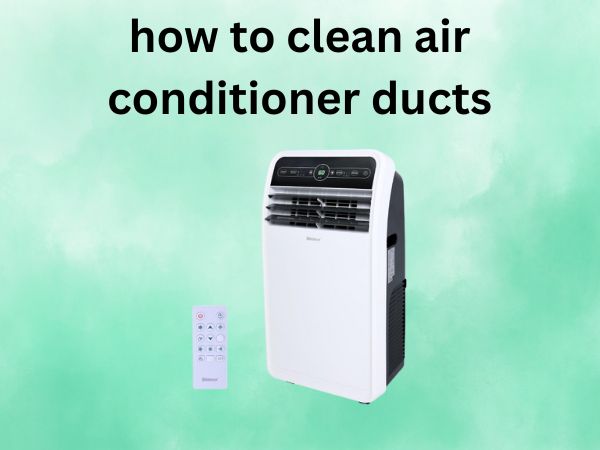How to Clean Air Conditioner Ducts [Your Complete DIY Guide]
Think of your air conditioning ducts as the lungs of your home. Just like you wouldn’t want to breathe through clogged airways, your AC system struggles when its ducts are filled with dust, debris, and contaminants. If you’ve been putting off this essential maintenance task, you’re not alone – but today, we’re going to change that.
Cleaning your air conditioner ducts isn’t just about maintaining your HVAC system; it’s about creating a healthier living environment for you and your family. Whether you’re dealing with mysterious odors, rising energy bills, or concerns about indoor air quality, this comprehensive guide will walk you through everything you need to know about DIY duct cleaning.
Table of Contents
Why Clean Air Conditioner Ducts Matter More Than You Think
Your home’s ductwork is like a highway system for conditioned air, but over time, this highway can become congested with unwanted passengers. Understanding why duct cleaning matters is the first step toward taking action.
The Hidden Health Risks of Dirty Ducts
Dirty ducts aren’t just an eyesore – they’re potential health hazards lurking in your walls. When dust, pollen, pet dander, and other allergens accumulate in your ductwork, they don’t just sit there quietly. Every time your AC kicks on, these contaminants get blown throughout your home, creating an invisible cloud of irritants.
For family members with asthma, allergies, or respiratory sensitivities, contaminated ducts can turn your safe haven into a trigger zone. The American Lung Association emphasizes that indoor air quality can be significantly worse than outdoor air, and dirty ducts are often the culprit.
But it’s not just about allergens. Moisture in ductwork can create the perfect breeding ground for mold and bacteria. These microorganisms can multiply rapidly in the dark, humid environment of your ducts, releasing spores and toxins that circulate throughout your home. Some mold species produce mycotoxins, which can cause serious health issues ranging from headaches and fatigue to more severe respiratory problems.
Energy Efficiency and Cost Savings
Here’s something that might surprise you: dirty ducts can increase your energy bills by up to 40%. When debris accumulates in your ductwork, it creates resistance that forces your AC system to work harder to push air through the system. It’s like trying to breathe through a straw versus breathing normally – your system has to expend more energy to achieve the same results.
Clean ducts allow air to flow freely, reducing the strain on your HVAC system and helping it operate at peak efficiency. This means lower energy bills, reduced wear and tear on your equipment, and a longer lifespan for your AC unit. When you consider that the average American household spends about $2,000 annually on energy bills, even a 20% improvement in efficiency can result in significant savings.
Signs Your AC Ducts Need Immediate Cleaning
Recognizing when your ducts need attention is crucial for maintaining good indoor air quality and system efficiency. Your home often gives you clear signals when it’s time to roll up your sleeves.
Visual Indicators You Can’t Ignore
The most obvious signs are often the ones you can see with your own eyes. Take a flashlight and peek into your supply and return vents. If you see thick layers of dust coating the visible portions of your ductwork, imagine what’s lurking deeper in the system.
Look for dark, dusty buildup around vent covers – this “ghosting” effect indicates that contaminated air is consistently flowing through these areas. You might also notice dust bunnies being blown out of vents when your system starts up, or a film of dust settling on furniture shortly after cleaning.
Mold growth is another serious visual indicator. If you see dark spots or fuzzy growth around vents or on duct surfaces, this suggests moisture problems that need immediate attention. Mold in ductwork can spread rapidly and pose serious health risks.
Performance Red Flags
Sometimes the signs aren’t visual but performance-related. If some rooms in your home are consistently warmer or cooler than others, blocked or restricted ducts might be the culprit. Reduced airflow from vents, even when your system is running at full capacity, often indicates significant blockages.
Strange odors are another telltale sign. Musty smells suggest mold or mildew growth, while stale or dusty odors indicate general contamination. If you notice these smells intensify when your AC first turns on, it’s definitely time for a thorough cleaning.
Essential Tools and Materials for Duct Cleaning
Success in duct cleaning depends largely on having the right tools for the job. While you don’t need to invest in expensive professional equipment, having quality tools makes the process more effective and less frustrating.
Basic Cleaning Supplies
Start with a high-quality vacuum cleaner with strong suction power. A shop vacuum with a long hose attachment works best for reaching deep into ductwork. You’ll also need a variety of brushes – stiff-bristled brushes for scrubbing stubborn debris and soft brushes for delicate surfaces.
Microfiber cloths are excellent for wiping down surfaces and capturing fine dust particles. Have plenty on hand because you’ll go through quite a few during the cleaning process. A good flashlight or headlamp is essential for seeing into dark ductwork, and screwdrivers will help you remove vent covers and access panels.
Don’t forget about cleaning solutions. A mild detergent mixed with warm water works for general cleaning, while specialized duct cleaning solutions can help break down stubborn buildup. For sanitizing, consider using EPA-approved antimicrobial treatments designed specifically for HVAC systems.
Professional-Grade Equipment Options
If you’re dealing with extensive contamination or want to achieve professional-level results, consider renting or purchasing more advanced equipment. Rotary brush systems can effectively scrub the interior walls of ducts, while specialized vacuum systems with HEPA filtration ensure captured contaminants don’t escape back into your home.
Air compressors with specialized attachments can help dislodge stubborn debris, and inspection cameras allow you to see exactly what you’re dealing with before and after cleaning. While these tools represent a larger investment, they can be worthwhile for homeowners with extensive ductwork or recurring contamination issues.
Safety First: Preparing for Duct Cleaning
Before you dive into cleaning your ducts, proper preparation is essential for both your safety and the protection of your home’s systems.
Power and System Shutdown
The first and most crucial step is completely shutting down your HVAC system. Turn off the system at the thermostat and shut off power at the circuit breaker. This isn’t just about preventing the system from turning on while you’re working – it’s about preventing debris from being sucked into the system’s components during cleaning.
Remove or cover supply and return vents that you’re not actively cleaning to prevent debris from falling into clean sections of the system. This step-by-step approach ensures you’re not just moving dirt from one part of the system to another.
Personal Protective Equipment
Duct cleaning can expose you to dust, allergens, and potentially harmful microorganisms, so proper protective equipment is non-negotiable. Wear a high-quality dust mask or respirator rated for fine particles – a simple cloth mask won’t provide adequate protection.
Safety glasses protect your eyes from dust and debris, while work gloves prevent cuts from sharp duct edges and protect your hands from cleaning chemicals. Long sleeves and pants provide additional protection, especially when working in cramped spaces like crawlspaces or attics.
Step-by-Step Guide to Cleaning AC Ducts
Now comes the main event – the actual cleaning process. This systematic approach ensures thorough cleaning while preventing damage to your ductwork.
Accessing Your Ductwork
Begin by removing vent covers and grilles. Most covers are held in place by screws, but some may have clips or other fasteners. Take photos before removal to remember the correct orientation for reinstallation.
Once covers are removed, use your flashlight to inspect the visible portions of your ductwork. This initial assessment helps you understand the extent of contamination and plan your cleaning strategy. Look for loose debris that can be easily vacuumed out, as well as stuck-on buildup that will require scrubbing.
Cleaning Supply Vents and Returns
Start with the most accessible areas – the supply vents and return air vents. Use your vacuum’s hose attachment to remove loose dust and debris from as far into the ducts as you can reach. Work systematically, starting from the farthest accessible point and working toward the opening.
For stuck-on buildup, use your brushes to scrub the duct walls, working the debris loose before vacuuming it out. Be gentle with flexible ducts, as they can be easily damaged by aggressive scrubbing. Rigid metal ducts can handle more vigorous cleaning.
Deep Cleaning the Main Ducts
Removing Stubborn Debris
For debris that won’t come loose with vacuuming alone, you’ll need to get more aggressive. Rotary brushes attached to long handles can help scrub interior duct walls, while compressed air can blast loose stubborn particles. Work in sections, scrubbing and then immediately vacuuming to prevent debris from settling elsewhere in the system.
Pay special attention to bends and joints in the ductwork, as these areas tend to accumulate the most debris. If you encounter wet or damp areas, investigate the source of moisture before continuing – you may have a leak that needs professional attention.
Sanitizing and Deodorizing
After removing visible debris, it’s time to sanitize your newly cleaned ducts. Use EPA-approved antimicrobial treatments designed specifically for HVAC systems. These products help eliminate bacteria, mold, and other microorganisms that may be lurking in your ductwork.
Apply the sanitizing solution according to manufacturer instructions, ensuring complete coverage of cleaned surfaces. Some products require a specific contact time to be effective, so don’t rush this step. For persistent odors, specialized deodorizing products can help neutralize smells rather than just masking them.
When to Call Professional Duct Cleaners
While DIY duct cleaning can be effective for routine maintenance, certain situations require professional expertise and equipment.
Complex System Configurations
If your home has a complex ductwork layout with multiple levels, extensive branching, or hard-to-reach areas, professional cleaning may be more effective. Commercial-grade equipment can reach areas that household tools simply can’t access, ensuring complete system cleaning.
Homes with flexible ductwork also benefit from professional attention, as these systems require specialized techniques to clean effectively without causing damage. Professionals have the experience to navigate these systems safely and efficiently.
Severe Contamination Issues
When you’re dealing with extensive mold growth, pest infestations, or other serious contamination issues, professional remediation is often necessary. These situations may require specialized treatments, containment procedures, and follow-up testing that go beyond typical homeowner capabilities.
Professionals also have access to more powerful equipment and can provide services like video inspection to document the extent of contamination and verify cleaning effectiveness.
Maintaining Clean Ducts: Prevention Tips
Once you’ve invested the time and effort to clean your ducts, maintaining that cleanliness becomes much easier with the right preventive measures.
Regular Filter Maintenance
Your air filter is your first line of defense against duct contamination. Check filters monthly and replace them according to manufacturer recommendations – typically every 1-3 months depending on usage and environmental conditions. High-efficiency filters can capture more contaminants but may need more frequent replacement.
Consider upgrading to higher-efficiency filters if your system can handle them. MERV ratings between 8-13 provide good filtration for most homes without restricting airflow excessively. However, consult your HVAC manual or a professional before upgrading, as some systems aren’t designed for high-efficiency filters.
Humidity Control Strategies
Controlling moisture levels in your home helps prevent mold and bacterial growth in ductwork. Maintain indoor humidity levels between 30-50% using dehumidifiers or humidifiers as needed. Ensure proper ventilation in high-moisture areas like bathrooms and kitchens, and address any water leaks promptly.
Regular HVAC maintenance also plays a crucial role in preventing contamination. Annual professional inspections can catch problems early and ensure your system continues operating efficiently.
Common Mistakes to Avoid
Even well-intentioned homeowners can make mistakes that reduce cleaning effectiveness or cause damage to their systems. Avoid using household cleaners not designed for HVAC systems, as these can leave residues that attract more dirt or damage duct materials.
Don’t neglect safety precautions – the confined spaces and potential contaminants involved in duct cleaning pose real health risks. Never clean ducts while your system is running, as this can push debris deeper into the system or damage components.
Finally, recognize your limitations. If you encounter extensive contamination, structural damage, or situations beyond your comfort level, don’t hesitate to call professionals. Sometimes the cost of professional service is less than the potential cost of DIY mistakes.
FAQs
How often should I clean my air conditioner ducts? Most homes benefit from professional duct cleaning every 3-5 years, but this can vary based on factors like pets, allergies, recent renovations, or visible contamination. Homes with smokers, multiple pets, or family members with respiratory issues may need more frequent cleaning.
Can dirty ducts really affect my energy bills? Absolutely. Contaminated ducts can reduce system efficiency by 20-40%, forcing your AC to work harder and consume more energy. Clean ducts allow for better airflow, reducing strain on your system and lowering energy costs significantly.
Is it safe to use household cleaners in my ductwork? No, household cleaners can leave residues that attract more dirt or potentially damage duct materials. Always use cleaners specifically designed for HVAC systems, or stick to mild soap and water solutions for basic cleaning.
What’s the difference between duct cleaning and just changing my air filter? While changing air filters prevents new contamination, duct cleaning removes existing buildup throughout the entire system. Filters only capture particles before they enter the system, but they can’t remove contamination that’s already accumulated in your ductwork.
How can I tell if my DIY duct cleaning was effective? Look for improved airflow from vents, reduced dust accumulation on furniture, elimination of musty odors, and more consistent temperatures throughout your home. You should also notice less dust being blown from vents when the system starts up, and your air filters may stay cleaner longer.
Conclusion
Cleaning your air conditioner ducts is one of those home maintenance tasks that pays dividends in multiple ways. You’ll breathe easier knowing your indoor air quality is improved, save money on energy bills through increased efficiency, and extend the life of your HVAC system. While the process requires some effort and attention to detail, the step-by-step approach outlined in this guide makes it manageable for most homeowners.
Remember that duct cleaning isn’t a one-and-done task – it’s part of ongoing home maintenance that should be performed every 3-5 years or as needed based on your home’s specific conditions. By staying proactive about duct maintenance and following proper cleaning techniques, you’re investing in your family’s health and your home’s comfort for years to come.
The key to success lies in preparation, patience, and knowing when to seek professional help. Start with the basics, work systematically, and don’t be afraid to tackle this important maintenance task. Your lungs – and your wallet – will thank you.




